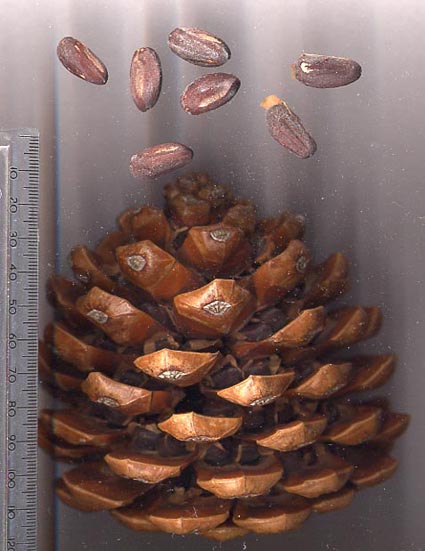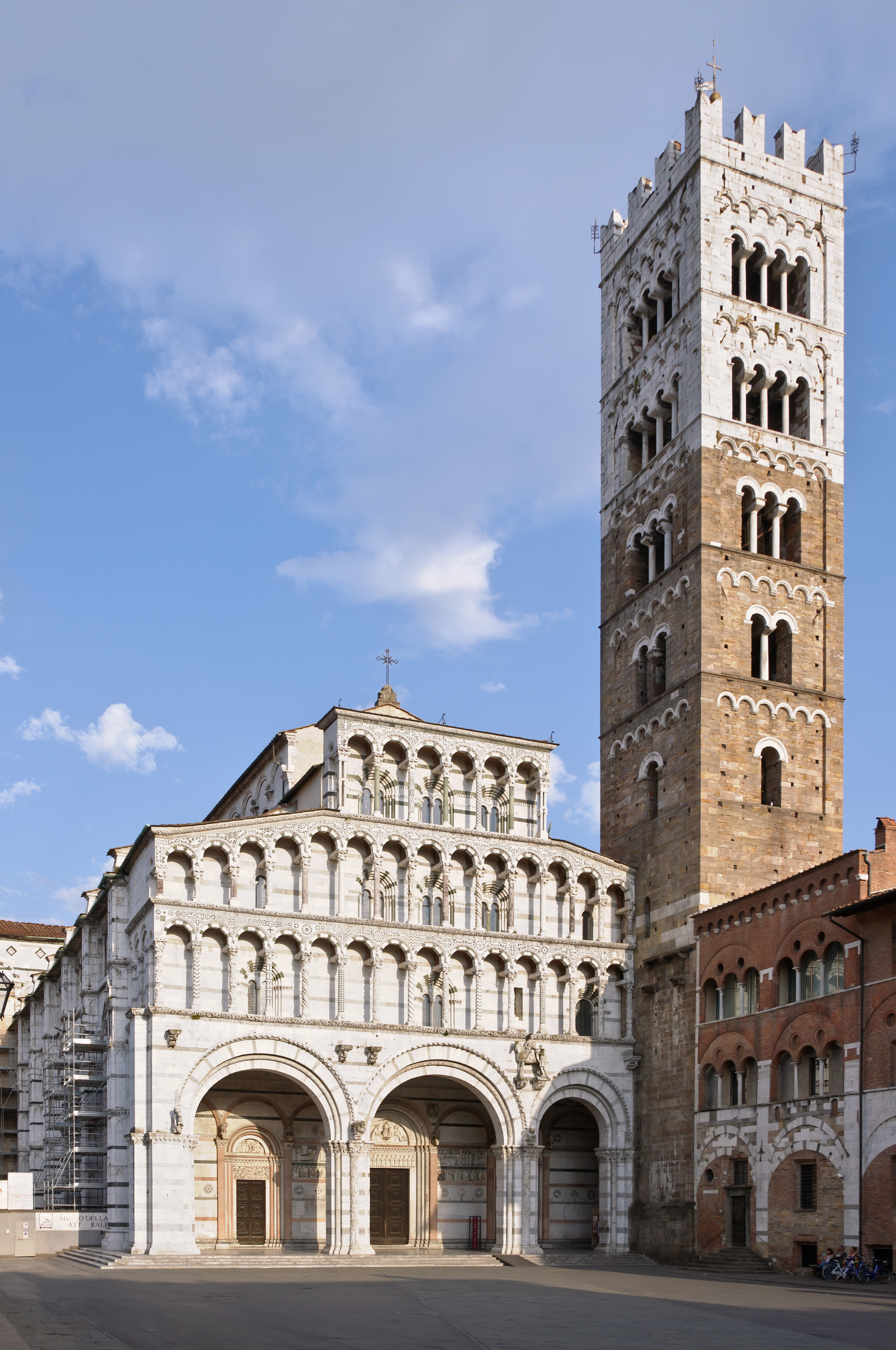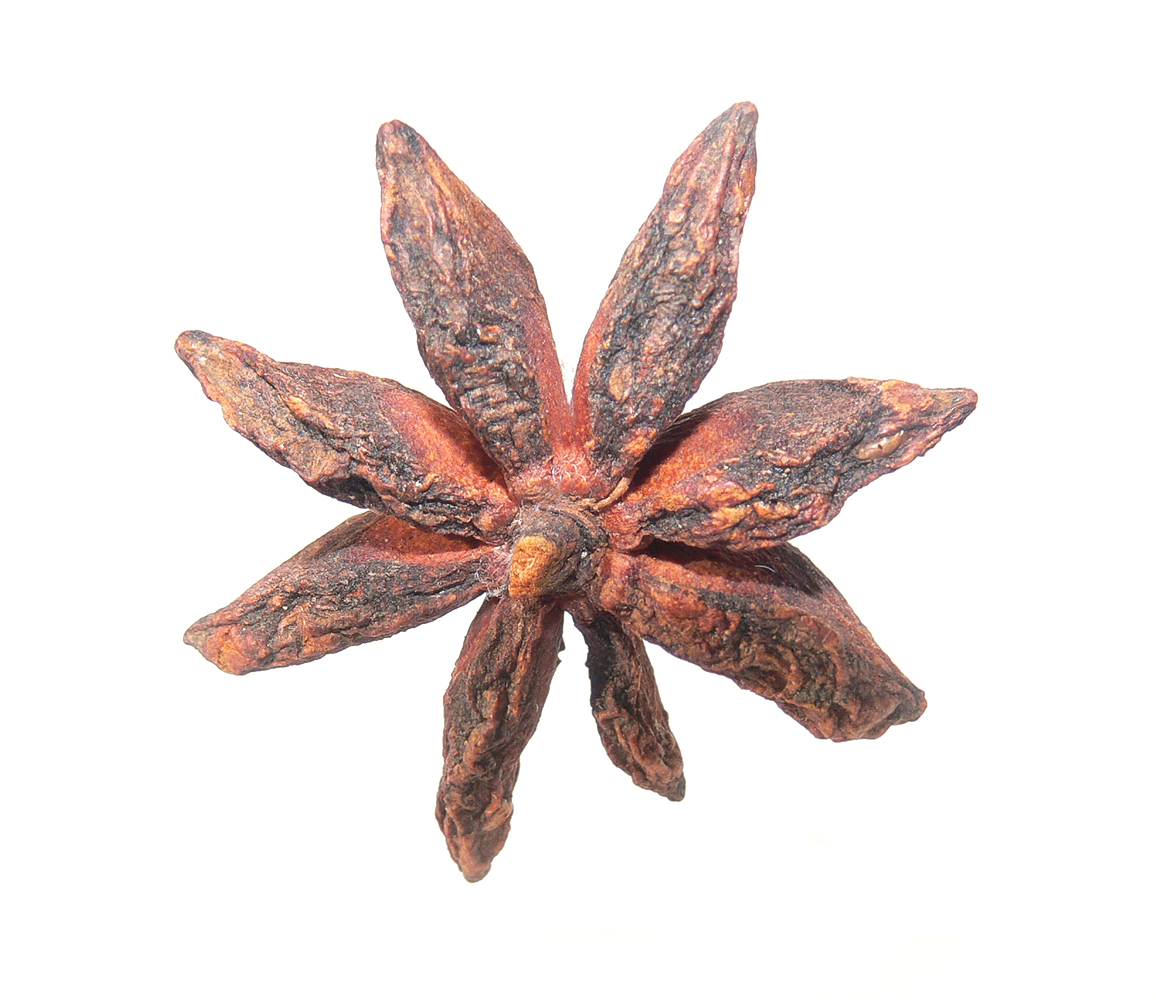|
Biroldo
''Biroldo'' is a very dark, brownish-red, soft-textured Tuscan blood sausage about 4 inches (10 cm) wide, with lighter-coloured chunks of meat and fat in it. It was traditionally made from parts of the pig, offal such as the heart, lungs, and tongue, that wouldn't be used for other sausages. Because offal was used, the sausage would start being made as soon as the pig was slaughtered so that the taste of the offal would be at its freshest. The offal is boiled, chopped, and seasoned with spices including cloves, star anise, cinnamon, nutmeg, fennel, and garlic. Pig's blood is added and it is formed into a sausage, using the pig's bladder or stomach as casing, which is cooked and then cooled with weights on top to press out the fat. It can be preserved in lard for 5 to 6 months, or eaten fresh within 8 to 10 days. ''Biroldo'' made in Garfagnana, Lucca, Tuscany, differs from that made in the rest of the province of Lucca in that in Garfagnana the head is also used. This ''bi ... [...More Info...] [...Related Items...] OR: [Wikipedia] [Google] [Baidu] |
Blood Sausage
A blood sausage is a sausage filled with blood that is cooked or dried and mixed with a filler until it is thick enough to solidify when cooled. Most commonly, the blood of pigs, sheep, lamb, cow, chicken, or goose is used. In Europe and the Americas, typical fillers include meat, fat, suet, bread, cornmeal, onion, chestnuts, barley, oatmeal, and buckwheat. On the Iberian Peninsula and in Latin America and Asia, fillers are often made with rice. Sweet variants with sugar, honey, orange peel, and spices are also regional specialties. In many languages, a general term such as ''blood sausage'' (American English) is used for all sausages that are made from blood, whether or not they include non-animal material such as bread, cereal, and nuts. Sausages that include such material are often referred to with more specific terms, such as ''black pudding'' in English. Other varieties of blood sausage include ''boudin rouge'' (Creole and Cajun), ''rellena'' or '' moronga'' (Mexico), ... [...More Info...] [...Related Items...] OR: [Wikipedia] [Google] [Baidu] |
Garfagnana
The Garfagnana () is a historical and geographical region of central Italy, today part of the province of Lucca, in Tuscany. It is the upper valley or basin of the river Serchio, and thus lies between the main ridge of the Northern Apennines to the north-east and the Alpi Apuane to the west. The principal towns are Castelnuovo di Garfagnana and Barga. History Garfagnana was historically inhabited by Ligurian ( Apuani and Friniati) and Etruscan populations.Giulio Ciampoltrini, ''Gli Etruschi della Garfagnana. Ricerche nell'insediamento della Murella a Castelnuovo di Garfagnana'', Polistampa Firenze 2005 The area was conquered by the Romans in 180 BC. After the fall of the Carolingian empire in 888 it came under the control of various feudal lords, and was later caught up in the rivalry between the Guelphs and the Ghibellines. In 1248 the Holy Roman Emperor Frederick II ceded it to the Republic of Lucca. In the fifteenth century much of the territory came under the con ... [...More Info...] [...Related Items...] OR: [Wikipedia] [Google] [Baidu] |
Pine Nut
Pine nuts, also called piñón (), pinoli (), or pignoli, are the edible seeds of pines (family Pinaceae, genus ''Pinus''). According to the Food and Agriculture Organization, only 29 species provide edible nuts, while 20 are traded locally or internationally owing to their seed size being large enough to be worth harvesting; in other pines, the seeds are also edible but are too small to be of notable value as human food. The biggest producers of pine nuts are China, Russia, North Korea, Pakistan and Afghanistan. As pines are gymnosperms, not angiosperms (flowering plants), pine nuts are not " true nuts"; they are not botanical fruits, the seed not being enclosed in an ovary which develops into the fruit, but simply bare seeds—"gymnosperm" meaning literally "naked seed" (from and ). The similarity of pine nuts to some angiosperm fruits is an example of convergent evolution. Species and geographic spread In Asia, two species, in particular, are widely harvested: Korea ... [...More Info...] [...Related Items...] OR: [Wikipedia] [Google] [Baidu] |
Pistoia
Pistoia (; ) is a city and ''comune'' in the Italian region of Tuscany, the capital of a province of the same name, located about north-west of Florence and is crossed by the Ombrone Pistoiese, a tributary of the River Arno. It is a typical Italian medieval city, and it attracts many tourists, especially in the summer. The city is famous throughout Europe for its plant nurseries. History ''Pistoria'' (in Latin other possible forms are ''Pistorium'' or ''Pistoriae'') was a centre of Gallic, Ligurian and Etruscan settlements before becoming a Roman colony in the 6th century BC, along the important road Via Cassia: in 62 BC the demagogue Catiline and his fellow conspirators were slain nearby. From the 5th century the city was a bishopric, and during the Lombardic kingdom it was a royal city and had several privileges. Pistoia's most splendid age began in 1177 when it proclaimed itself a free commune: in the following years it became an important political centre, ere ... [...More Info...] [...Related Items...] OR: [Wikipedia] [Google] [Baidu] |
Castelnuovo Della Daunia
Castelnuovo della Daunia (until 1863 just called "Castelnuovo") is an Italian municipality (comune) with 1365 inhabitants (December 31, 2018) in the province of Foggia in Apulia, Puglia, Italy. The municipality is located approximately 38 kilometers northwest away from Foggia and it borders directly on the province of Campobasso (Molise). The town is known for its good air quality and mineral water from the La Cavallina spring. Years ago, the water was used to be sold all over Italy. History The municipality was founded by the Schiavone, Furthermore, it was settled by a maturity of slavs. The palazzo baronale, the current place of the town hall, was built in the 11th century. The place received the name "Castelnuovo" during the 15th century. Numerous Albanians - who fled from the Turkish massacres in their hometown - immigrated to Castelnuovo between 1468 and 1476. This led to an intolerance towards the refugees which made it difficult for them to live together. On 18 April 1 ... [...More Info...] [...Related Items...] OR: [Wikipedia] [Google] [Baidu] |
Forte Dei Marmi
Forte dei Marmi () is an Italian sea town and ''comune'' located in the province of Lucca, in northern Tuscany, overlooking the Ligurian Sea. Tourism is the principal activity of Forte dei Marmi's citizens. The population of the town, amounting to some 7,700, nearly triples during the summer, because of the hundreds of tourists who mainly come from Florence, Milan, Germany, and Russia. Forte dei Marmi is one of the major destinations which attract the Italian upper class. The city contains a gate built in a former bog, a historical artifact that relates to strategic planning by the ancient Roman army. Toponymy In Italian ''Forte dei Marmi'' means "Fort of the marbles". The town takes its name from the fortress that rises in the middle of the main square, built under Grand Duke Peter Leopold, who was to become Leopold II, Holy Roman Emperor, in 1788. The fortress was built to defend the coast from outer attacks, but in the 19th and the beginning of the 20th century it became the ... [...More Info...] [...Related Items...] OR: [Wikipedia] [Google] [Baidu] |
Lucca
Città di Lucca ( ; ) is a city and ''comune'' in Tuscany, Central Italy, on the Serchio River, in a fertile plain near the Ligurian Sea. The city has a population of about 89,000, while its Province of Lucca, province has a population of 383,957. Lucca is known as an Italian "Città d'arte" (City of Art) from its intact Renaissance-era Walls of Lucca, city walls and its very well preserved historic center, where, among other buildings and monuments, are located the Piazza dell'Anfiteatro, which has its origins in the second half of the 1st century A.D., the Guinigi Tower, a tower that dates from the 14th century and the Cathedral of San Martino. The city is the birthplace of numerous world-class composers, including Giacomo Puccini, Alfredo Catalani, and Luigi Boccherini. Toponymy To the Ancient Rome, Ancient Romans, Lucca was known as ''Luca''. From more recent and concrete toponymic studies, the name Lucca has references that lead to "sacred grove" (Latin: ''lucus''), " ... [...More Info...] [...Related Items...] OR: [Wikipedia] [Google] [Baidu] |
Nutmeg
Nutmeg is the seed, or the ground spice derived from the seed, of several tree species of the genus '' Myristica''; fragrant nutmeg or true nutmeg ('' M. fragrans'') is a dark-leaved evergreen tree cultivated for two spices derived from its fruit: nutmeg, from its seed, and mace, from the seed covering. It is also a commercial source of nutmeg essential oil and nutmeg butter. Maluku's Banda Islands are the main producer of nutmeg and mace, and the true nutmeg tree is native to the islands. Nutmeg and mace, commonly used as food spices, have been traditionally employed for their psychoactive and aphrodisiac effects, though clinical evidence is lacking. High doses can cause serious toxic effects including acute psychosis, with risks heightened during pregnancy and with psychiatric conditions. Conifers of the genus '' Torreya'', commonly known as the nutmeg yews, have edible seeds of similar appearance, but are not closely related to ''M. fragrans'', and are not used as a spice ... [...More Info...] [...Related Items...] OR: [Wikipedia] [Google] [Baidu] |
Fennel
Fennel (''Foeniculum vulgare'') is a flowering plant species in the carrot family. It is a hardy, perennial herb with yellow flowers and feathery leaves. It is indigenous to the shores of the Mediterranean but has become widely naturalized in many parts of the world, especially on dry soils near the sea coast and on riverbanks. It is a highly flavorful herb used in cooking and, along with the similar-tasting anise, is one of the primary ingredients of absinthe. Florence fennel or finocchio (, , ) is a selection with a swollen, bulb-like stem base (sometimes called ''bulb fennel'') that is used as a vegetable. Description ''Foeniculum vulgare'' is a perennial herb. The stem is hollow, erect, and glaucous green, and it can grow up to tall. The leaves grow up to long; they are finely dissected, with the ultimate segments filiform (threadlike), about wide. Its leaves are similar to those of dill, but thinner. The flowers are produced in terminal compound umbels wid ... [...More Info...] [...Related Items...] OR: [Wikipedia] [Google] [Baidu] |
Tuscany
Tuscany ( ; ) is a Regions of Italy, region in central Italy with an area of about and a population of 3,660,834 inhabitants as of 2025. The capital city is Florence. Tuscany is known for its landscapes, history, artistic legacy, and its influence on high culture. It is regarded as the birthplace of the Italian Renaissance and of the foundations of the Italian language. The prestige established by the Tuscan dialect's use in literature by Dante Alighieri, Petrarch, Giovanni Boccaccio, Niccolò Machiavelli and Francesco Guicciardini led to its subsequent elaboration as the language of culture throughout Italy. It has been home to many figures influential in the history of art and science, and contains well-known museums such as the Uffizi and the Palazzo Pitti. Tuscany is also known for its wines, including Chianti, Vino Nobile di Montepulciano, Morellino di Scansano, Brunello di Montalcino and white Vernaccia di San Gimignano. Having a strong linguistic and cultural identity, ... [...More Info...] [...Related Items...] OR: [Wikipedia] [Google] [Baidu] |
Illicium Verum
''Illicium verum'' (star anise or badian, Chinese star anise, star anise seed, star aniseed and star of anise) is a medium-sized evergreen tree native to South China and northeast Vietnam. Its star-shaped pericarps harvested just before ripening are a spice that closely resembles anise in flavor. Its primary production country is China, followed by Vietnam and other Southeast Asian countries. Star anise oil is highly fragrant, used in cooking, perfumery, soaps, toothpastes, mouthwashes, and skin creams. Until 2012, when they switched to using genetically modified '' E. coli'', Roche Pharmaceuticals used up to 90% of the world's annual star anise crop to produce oseltamivir (Tamiflu) via shikimic acid. Etymology and nomenclature ''Illicium'' comes from the Latin meaning "entice" or "seduce".Gledhill, David (2008). "The Names of Plants". Cambridge University Press. (hardback), (paperback). pp 210, 400 ''Verum'' means "true" or "genuine". The name "badian" appears to der ... [...More Info...] [...Related Items...] OR: [Wikipedia] [Google] [Baidu] |







